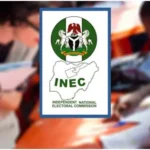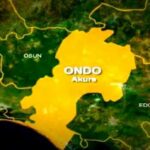
Agency: Sites face theft, vandalism
Nigeria joins the rest of the world to mark the World Day to Combat Desertification and Drought last Saturday.
The Day is observed on June17 every year, to promote public awareness of international efforts to combat desertification.
This year’s celebration tagged, “Our land Our Home. Our future” examines the important link between land degradation and migration.
It also looks at other issues on environmental degradation, food insecurity and poverty.
Desertification is the result of a cycle of land degradation, turning once fertile soils into sterile land as a consequence of over-exploitation by intensive farming, forest exploitation for fuel and timber, and overgrazing.
According to UNESCO, desertification is a global phenomenon, affecting the livelihoods of 900 million people across the five continents and representing a third of worldwide threats to biodiversity. It requires global attention.
Nigeria is one of the countries faced with rapid desert encroachment, with notable effects on the northern part of the country.
The impact has been more glaring over the years due to global warming and threatening many livelihoods in the areas.
According to Food and Agriculture Organisation, Nigeria loses about 350,000 hectares of land every year to desert encroachment.
This has led to demographic displacements in villages across 11 states in the North. It is estimated that Nigeria loses about $5.1billion every year owing to rapid encroachment of drought and desert in most parts of the north.
These problem which is obvious in the 11 frontline Northern states has threatened the livelihoods of over 40 million Nigerians by destroying human settlements and enforced migration, increasing rural poverty and social conflicts.
The Federal government in an effort to address the menace of desertification took a bold step three years back to implement the Great Green Programme (GGW) project in the 11 frontline states to help fight the effects of climate change in the region.
According to the national action plan for the implementation of the project in Nigeria, participating states, which include Adamawa, Borno, Kano, Jigawa, Gombe, Bauchi, Katsina, Zamfara, Kebbi, Sokoto and Yobe are expected to make land available for the planting of the Nigeria component of the wall of trees.
The GGW is to cover about 1,500km-long (East-West) and 2km-wide (North-South), using both economic and forest tree species to be based on community-driven, integrated rural development approach as agreed for the Nigeria segment.
Proper and careful implementation of the project, aside creating employment, would ensure that the degraded lands would be rehabilitated, enhance food security and reduce poverty as member of the participating communities would have their sources of livelihood enhanced.
However, an investigation by Daily Trust shows that the wall of trees project in some of the states has not been a complete success story since the flag off the project by former president Goodluck Jonathan in 2014.
Katsina
Our reporter gathered that the GGW project is facing serious challenges including failed boreholes, missing fences and signposts in addition to unpaid allowances of forest guards, which has forced many to abandon the job in the state.
The project executed in the frontline local governments of Baure, Daura, Mai’Adua, Kaita, Mashi, Katsina, Jibia, Zango and Sandamu, with major components of Shelterbelt establishment and Community Nursery/Orchards, alternative wood use for fuel, have all suffered setbacks.
It was gathered that a total of 28 kilometres of the shelterbelt starting from Gurbin Baure in Jibia Local Government, which connects with Zurmi Local Government in Zamfara State was established and another of 2 km to cover Baure and Zango local governments to connect with that established by Jigawa State at Shabarun Jeke village in Sule Tankarkar Local Government, was established last year but also suffered setback due to lack of fund.
A visit to Ganga village in Daura where the Wet and Dry Season Farmers Cooperative of the community was engaged to produce 20,000 seedlings each year, showed that their only source of water, a solar powered borehole, was not functioning optimally.
The association’s chairman, Abdurrahman Shuaibu, said for the past three years, they have been making do with the borehole, which had problem right from installation.
In Gurbi and Tsayau communities of Jibia LGA, virtually all the seedlings planted have dried up due to the failed borehole that was supposed to supply water to the plantation. Similarly in Dagi village, the borehole provided had developed technical issues, and the orchard has failed.
A GGW field officer, Yusuf Umar, admitted that the programme was encountering several challenges, technical and natural disasters.
For Ali Bugaje, a community leader in Jibia, most of the casual workers are complaining of non-payment of their allowances for months.
Yobe
The programme has the longest boundary here, covering 363 kilometers – reaching up to Niger Republic. This goes beyond the borders of Machina, Karasuwa, Yusufari, Geidam and Yunusari local government areas of the state.
Our correspondent gathered that the entire programme has suffered a setback in Yobe since it was neglected in 2016 and 2017 due lack of sustainability of funding from the federal government.
Out of all three shelterbelts, only that in Machina, at Kaganama community, was successful.
Masafa Hassan, a farmer in Kaska community said the seedlings were planted toward the end of the rainy season, and that without an alternative source of watering them during the dry season, the seedlings dried off.
He said the plantations established, which were mostly economic trees in orchards, recorded tremendous success because boreholes were drilled for watering them and they were fenced against people and animals that could cause any destruction.
Meanwhile, a source from the Yobe State Ministry of Environment has revealed that “Now, we are only told that the Federal Government is raising seedling for plantation under GGW Programme without consulting our ministry.”
The source said the programme has nurseries in Geidam, Kanamma, Gashua, Bayemari, Yusufari, Jajemaji, Nguru and Damaturu central nursery, but lamented that there were no resources to raise the seedlings to continue with the initiative.
Yobe State Commissioner of Environment, Alhaji Jibrin Kortoni, told our correspondent that the programme was successful in the four local government areas, with the exception of Geidam and some parts of Yunusari because of the insurgency.
Jigawa
The programme in Jigawa State is bedeviled with problems; some of trees planted are undergrown due to lack of attention and some of the shelterbelts were virtually empty as only few of the trees had thrived somewhat.
When Daily Trust visited Jeke village in Suletankarkar Local Government Area, where 18 kilometers of shelterbelts were implemented, most of the belts were an eyesore, as their fences had collapsed, thereby giving pastoralists easy access to plants.
Yakubu Abdullahi, a native of Jeke, the host community, who is also in charge of the shelterbelt attributed the problem to the withdrawal of forest guards.
In Garin Sule in Suletankarkar LGA, however, the story is different as the project is doing well and many people are willing to key into the programme
The only challenge, according to the Village Head of Garin Sule, Malam Maigari Bala, is the threat from the owners of the land who claim they were not compensated.
Kebbi
After the flag-off of the project in Bachaka in Kangiwa Local Government Area of the state covering over 7000 kilometres, the host communities were provided seedlings of fruit bearing plants and other economic trees that were developed into nurseries and orchards to sustain the project.
The Commissioner for Environment, Muhammed Gado Suleiman, said “We don’t know anything about the maintenance of the project. It is a Federal Government project. All I know is that whenever they come from Abuja they will come to me as Commissioner for the Environment to say they wanted to visit the project site.”
“I think one or two people have been coming to the site from Abuja but we are not being carried along on the project activities,” he added.
Bauchi
Here, the project is being implemented in the northern part of the state – Jama’are, Itas/Gadau, Azare, Gamawa, Zaki and Misau local government areas.
According to findings, in Gamawa Local Government Area, about 150 people across Budimari, Maluri, Raga and Chiromari were engaged for the project.
One of the officials, a Desk Officer, said that five hectares were earmarked in Budimari and Maluri while three hectares and two hectares each were used in Raga and Chiromari respectively to raise the trees in orchards and nurseries at different locations.
Umar Budimeri, one of the participating farmers confirmed that they raised the seedlings which were later bought from them for planting.
Another participant, Danlami Gamawa, who spoke to our reporter on phone said that the project is facing challenges due to lack of enthusiasm from some communities because some of the promises made to the participants have not been fulfilled.
Another participant who pleaded for anonymity, said the programme started having problem due to some underhand dealings between officials and contractors.
“There was an instance when two hectares were supposed to be used for a nursery, but less than a hectare was used and we protested after which the remaining land was added to make up the two hectares,” he said.
Borno
The execution of the project has been hampered by the insurgency but only two local government areas, Mobbar and Abadam out of 27, were involved in the programme.
Data made available to Daily Trust by the office of the Director of Forestry, Borno State Ministry of Environment, who is the Desk Officer for the GGW programme in the state, showed that at commencement in 2013, two communities in Mobbar – Damasak and Gashegar; and two in Abadam – Abadam and Malamfatori – benefitted from the programme.
Completely fenced orchards and plantations were raised in each, with a solar-powered borehole and windmill-powered borehole for each; but the windmill powered boreholes were in the process of being installed with the necessary machinery to function when the insurgency reached its peak thereby incapacitating it.
The agency speaks
The Director General of the National Agency for Great Green Wall (NAGGW), Goni Ahmed, said the challenges faced in the project were as a result of activities of some groups, adding that “the boreholes and fences have been subjected to serious theft and vandalism because they are in remote locations.”
He added that most of the communities depend on the GGW borehole which also affected it.
Goni said, “Most of the boreholes equipment that were stolen, like the pumps and panels were replaced two to three times and there are instances where people have been apprehended by the community and police and some charged to court in Katsina and Sokoto.
“We plant and fence, but at night they go to remove and sell and when such happens animal gain easy access to go in and destroy the plants; and then we replant and it happens again,” he stated.
He noted that all these are happening because they don’t have their own officers in the states as the structures have not been put in place but that with the approval by the head of service, soon “We are going to have our presence in each of the states”.
On the guards, he said it was noted that the forest guards that were not resident in the locality of the project sites, making it difficult for them to be at their duty posts. He said they are now working to ensure that the forest guards are picked from the project community.
On funding, he said in the first operational layout, money was sent to state governments to procure seeds and it was a failure because it was politicized. “Now, with the present government we must follow due process and we cannot just send money direct to the state government without a plan.”
He said to properly address the challenges, they are opening state offices and shifting the operational department to Kano for close proximity to the operational areas for supervision and close interaction with the state and local governments.
 Join Daily Trust WhatsApp Community For Quick Access To News and Happenings Around You.
Join Daily Trust WhatsApp Community For Quick Access To News and Happenings Around You.


